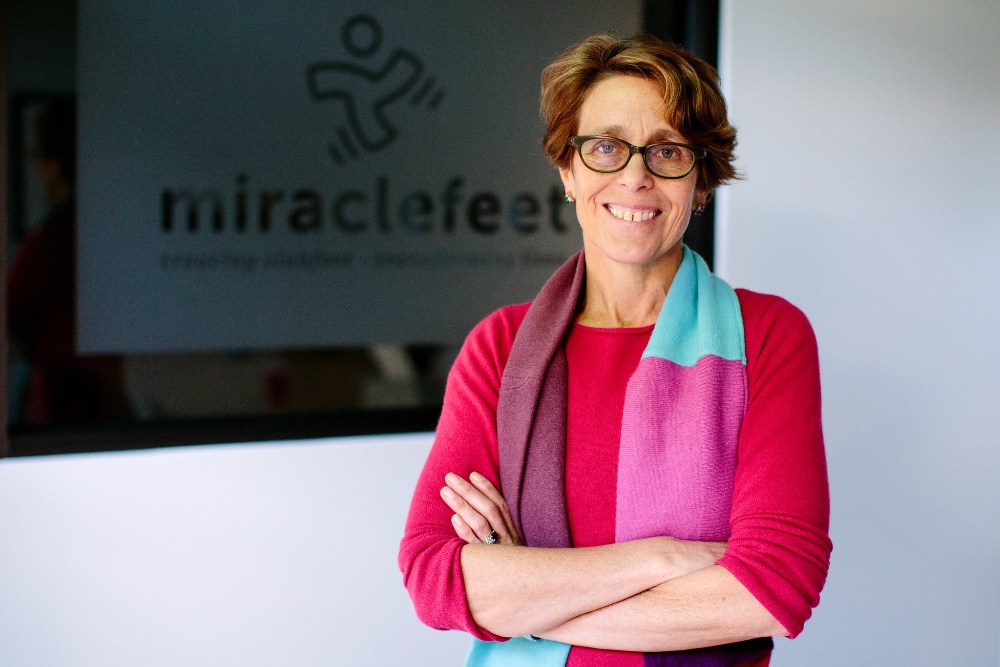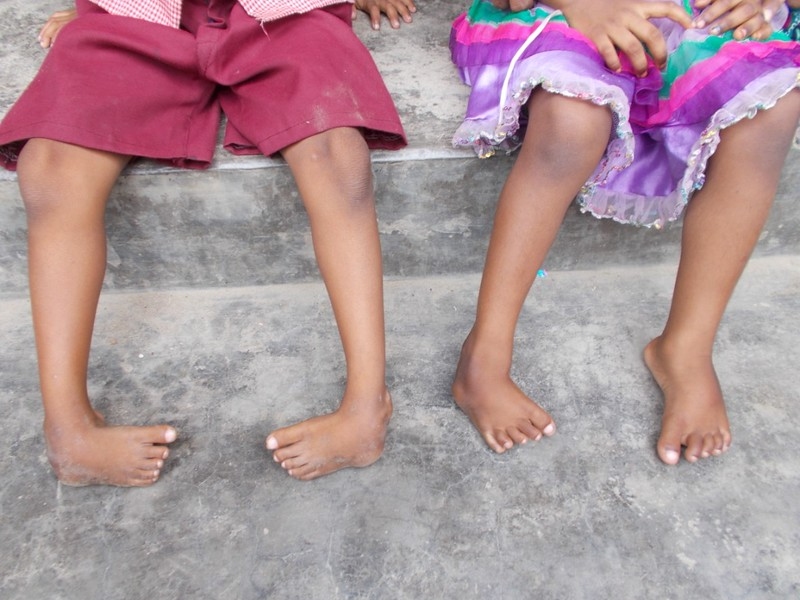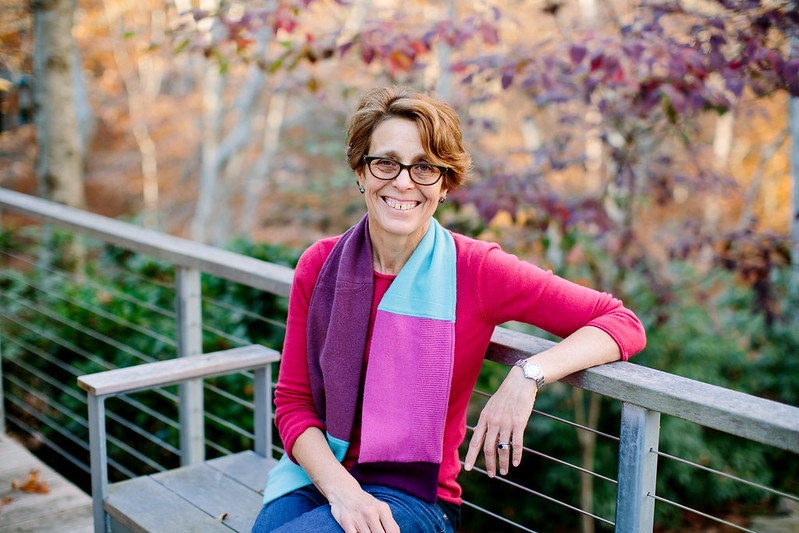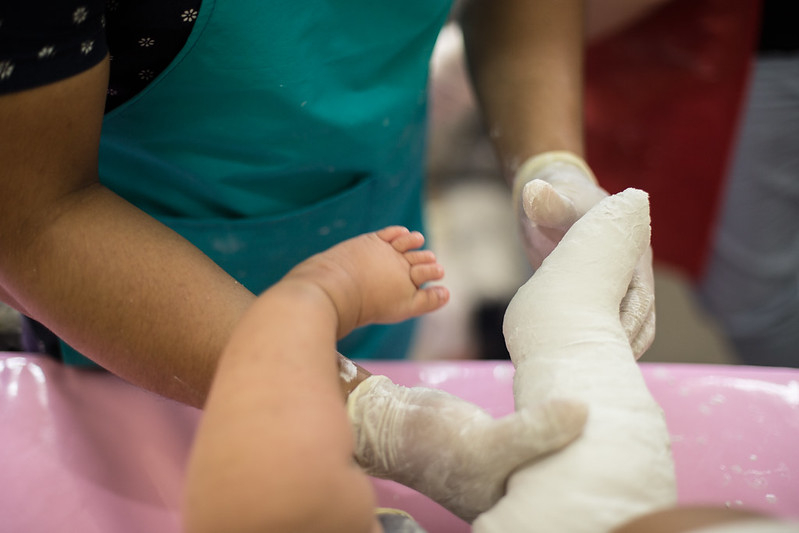
UK Disability History Month is coming to an end, but one organisation wants the recognition of challenges that disabled people faced and still face today to carry on past this celebratory month.
CEO of the leading global children’s nonprofit MiracleFeet wants to raise the awareness of clubfoot throughout the world, especially in middle- and low-income countries, as it can be treated if funded and understood properly.
Chesca Colleredo-Mansfield who co-founded MiracleFeet explained what the nonprofit does, spoke about what needs to be done to challenge the issues of inequality and disablism and revealed what she wants Disability History Month to achieve.
What is MiracleFeet?
MiracleFeet is the largest global non-profit organisation working to ensure that every child born with clubfoot has access to the medical care they need to thrive. Founded in 2010, MiracleFeet has supported treatment for more than 62,000 children across 30 countries.
We partner with local health workers and organisations to bring the low-cost solution to children who need it today and for generations. Treatment for one child costs less than £350 and with our support, this care is either free or very low-cost for the families.
Why did you want to set up the charity?
My father was a British diplomat, and I grew up living all over the world. Seeing inequalities all around me ignited a deep desire to find a way to help others in a meaningful way.
Fast forward many decades, I learned about clubfoot and the implications it can have on a child and their family from a colleague at The University of Iowa who showed me a video of a Ugandan boy with clubfoot. The boy was standing in a doorway all alone, both of his feet twisted inward. I had a visceral reaction to seeing that forlorn child, resigned to watching from the side-lines. I had young children at the time who were very active, and I thought about what their lives – and our family’s life – would be like if they weren’t able to walk or run.
Soon after, I connected with some parents of children born with clubfoot who were treated by Dr. Ponseti using his breakthrough treatment, now known as the Ponseti Method. We joined forces and in 2010 co-founded MiracleFeet. Our global team has been working ever since to bring the low-cost, non-surgical solution to countries where children live with this preventable disability because families have long lacked access to proper treatment.
What has MiracleFeet achieved in the 11 years since it was co-founded by yourself?

We’ve come a long way since founding our first partnership in Brazil. In the last 11 years, MiracleFeet has expanded into 30 countries, 334 clinics, and helped transform the lives of more than 62,000 children. MiracleFeet works with local partner organisations and health workers, across public and private health systems, to ensure every child with clubfoot can receive appropriate care as soon as possible after birth.
We’ve proven that the Ponseti method can be safely and effectively delivered anywhere on earth and reach populations at scale. Our model includes creating early detection and referral pathways, training healthcare workers and practitioners in the Ponseti Method, providing treatment supplies, including braces, and establishing systems to collect and analyse patient and clinic-level data to monitor quality and measure impact. We’re not flying American or European doctors in to treat kids or building new infrastructure. It’s all happening locally, using existing hospitals, which means the solution is long-lasting, sustainable, and cost-effective.
We also work on raising awareness of clubfoot to ensure communities know that it is treatable, and we offer support and serve as a resource to families to ensure they understand the treatment process and can help their children through the different stages.
How important is it to have a Disability History Month in the UK?
Disability History Month is not only about celebrating the lives of disabled people, but also about highlighting the challenges disabled people have faced in the past and still encounter today. It’s an educational event that focuses on the history of the disability community and raises awareness of the struggle for equality.
Clubfoot is a leading cause of physical disability worldwide, but 95% of children who are treated early can experience active, healthy lives, with minimal if any lasting effects. In the UK, prenatal diagnosis of clubfoot is the norm and is almost always followed by immediate treatment after birth. Early detection and treatment significantly reduce a child’s chance of experiencing long-term mobility issues.
In contrast, 85% of children born with clubfoot in low- and middle-income countries have limited access to treatment. 155,000 infants every year still do not receive this straightforward care, causing many—millions of people in fact—lifelong pain, stigma, and exclusion. UK Disability History Month helps raise discussions around the unequal position of people with disabilities face and highlight the significance of disabled people’s struggle for equality and inclusion – something which we as a charity also aim to do.
What do you want this annual moment to achieve?
Overall, we would like this moment, and others like it, to generate greater understanding of the global disability community, and to serve as a call to action for those in positions of power to recognise disability as an important part of the global health agenda.
In the last 20 years, funding from global health donors has been largely absent for children born with clubfoot and, as of today, there is no World Health Organization (WHO)-backed strategy for eliminating disability caused by untreated clubfoot. The sector has not only grossly underfunded this issue but, for decades, also failed to prioritize disability-inclusive access to rehabilitation and assistive technology—from wheelchairs, to glasses, to clubfoot braces.
Despite being among the most common birth anomalies, clubfoot has been largely neglected compared to other newborn and child health issues. While clubfoot has received only a meagre $5 million of development assistance in the last 10 years, investments made in other conditions of similar severity, treatability, and prevalence (particularly those bolstered by the presence of WHO-supported strategies) have been significant and led to striking progress.

What more do you think needs to be done to challenge the issues of inequality and disablism both in the UK and across the world?
Recognise that if we are really going to solve global inequality, we must address the rights and needs of people with disabilities, especially in low and middle-income countries. Disability has fallen through the cracks of global development efforts, and we have a long way to go towards inclusion.
We must ensure people with disabilities have access to good healthcare and fight the enormous stigma surrounding physical and cognitive impairments. Supporting disabled people to achieve their highest standard of health and functioning is a human right. Empathise: how does the ability to move impact your daily life? Understand how little, in the scheme of global investments and development spending, it would take to make such a monumental difference in the lives of millions of children who could walk and move independently if they received proper medical support.
What's next for MiracleFeet?
The ultimate goal for MiracleFeet is to ensure all children born with clubfoot can access quality care regardless of where they are born. However, to achieve this, we need to significantly increase awareness of what clubfoot is and how straightforward it is to treat.
Recently, we began working with inspiring Paralympians Aaron Mckibbin and Jonathan Broom-Edwards, both born with clubfoot, on advocacy and awareness-raising efforts. We hope that increased awareness will also lead to greater financial support so we can reach more children with this life-changing treatment.
Simultaneously, we are advocating for clubfoot to be prioritised in the global health agenda. For example, updated guidelines from the WHO on clubfoot’s nonsurgical management would help health leaders in many countries adopt and formalize treatment pathways, medical curricula, and service standards that incorporate the Ponseti method in health systems.
Above all, we hope to continue making a positive impact on the lives of as many children and families as we can by providing the care they need to thrive.

Words by Lucy Roberts for Female First, who you can follow on Twitter, @Lucy_Roberts_72.
MORE FROM HEALTH: LTA Specialist Psychosocial Team on mentally adjusting to the winter season
Tagged in Health

